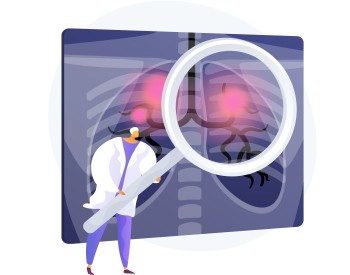
HRCT Orbit Plain Scan is a specialized imaging technique utilizing high-resolution computed tomography to capture detailed cross-sectional images of the eye socket (orbit) without the use of contrast agents.
HRCT Orbit Plain in India with Cost
HRCT Orbit Plain Scan: A
Comprehensive Exploration
Introduction
Delving into Precision Imaging with HRCT Orbit Plain Scan
HRCT (High-Resolution Computed Tomography) Orbit Plain Scan is an advanced diagnostic imaging procedure designed to provide detailed insights into the structures of the eye socket and surrounding areas. This comprehensive guide aims to elucidate the significance, procedure, and applications of HRCT Orbit Plain Scan, offering a thorough understanding of its role in ophthalmic diagnostics.
Understanding HRCT Orbit Plain Scan
What is HRCT Orbit Plain Scan?
HRCT Orbit Plain Scan is a specialized imaging technique utilizing high-resolution computed tomography to capture detailed cross-sectional images of the eye socket (orbit) without the use of contrast agents. It offers unparalleled clarity in visualizing orbital structures.
The Significance of HRCT
Orbit Plain Scan
Precision in Ophthalmic Diagnosis
HRCT Orbit Plain Scan plays a pivotal role in precision ophthalmic diagnosis, providing detailed images for assessing orbital fractures, tumors, inflammations, and other conditions affecting the eye socket.
Detailed Visualization of Orbital Anatomy
With high-resolution images, the scan enables healthcare professionals to study the intricate details of orbital anatomy, aiding in the identification and characterization of various pathologies.
The Procedure: A Step-by-Step Guide
Patient Preparation
Patients undergoing HRCT Orbit Plain Scan typically require minimal preparation. It's essential to communicate any allergies or relevant medical history to the healthcare team.
Image Acquisition
The CT scanner captures multiple high-resolution images, offering detailed cross-sectional views of the structures within the orbit.
Applications of HRCT Orbit Plain Scan
Diagnosing Orbital Fractures
HRCT Orbit Plain Scan is highly effective in diagnosing orbital fractures, providing precise images that assist in determining the location and extent of the fracture.
Detecting Orbital Tumors and Inflammations
The detailed imaging capabilities of this scan make it an invaluable tool for detecting and characterizing orbital tumors and inflammations, contributing to accurate diagnosis and treatment planning.
Advantages and Considerations
Advantages of HRCT Orbit Plain Scan
Unmatched Precision
HRCT Orbit Plain Scan offers unmatched precision in visualizing orbital structures, allowing for accurate diagnosis and treatment planning.
Non-Invasive Procedure
The procedure is non-invasive, ensuring patient comfort and ease of examination while delivering high-quality diagnostic information.
Considerations and Precautions
Radiation Exposure
As with any CT scan, consideration is given to radiation exposure. The healthcare team carefully evaluates the benefits against the risks for each patient.
Conclusion
In conclusion, HRCT Orbit Plain Scan emerges as a crucial diagnostic tool, providing detailed and high-resolution images for precise assessment of orbital conditions. From fractures to tumors, this imaging technique significantly contributes to enhancing ophthalmic healthcare.
FAQs: Clarifying HRCT Orbit Plain Scan
1. Is HRCT Orbit Plain Scan painful?
No, the procedure is generally painless. Patients may experience slight discomfort lying still during the scan.
2. How long does an HRCT Orbit Plain Scan take?
The procedure typically takes around 15 to 30 minutes, depending on the patient's condition.
3.Can pregnant women undergo HRCT Orbit Plain Scan?
While generally safe, precautions are taken for pregnant women, and alternative imaging methods may be considered.
4. Are there dietary restrictions before an HRCT Orbit Plain Scan?
Generally, there are no specific dietary restrictions for this scan. However, patients are advised to follow any instructions provided by the healthcare team.
5. How often is an HRCT Orbit Plain Scan recommended for follow-up examinations?
Follow-up scans are scheduled based on the individual's medical history and the presence of specific orbital conditions.
6. Can HRCT Orbit Plain Scan detect eye socket fractures accurately?
Yes, HRCT Orbit Plain Scan is highly accurate in visualizing and assessing eye socket fractures, providing detailed information for effective treatment planning.
7. Is HRCT Orbit Plain Scan suitable for children?
Yes, HRCT Orbit Plain Scan can be performed on children when necessary. The healthcare team considers factors like the child's age, medical condition, and the diagnostic need.
8. Are there any specific post-scan instructions for patients?
Typically, there are no specific post-scan restrictions. Patients can resume their normal activities unless advised otherwise by the healthcare provider.
9. How soon can results be expected after an HRCT Orbit Plain Scan?
Results are usually available shortly after the scan, and the healthcare provider will discuss the findings and any necessary follow-up steps with the patient.
10. Are there alternative imaging methods for orbital conditions?
Yes, alternative methods like MRI (Magnetic Resonance Imaging) can be considered based on the specific condition and patient factors, and the healthcare team will determine the most suitable approach.
(0)
Login to continue



